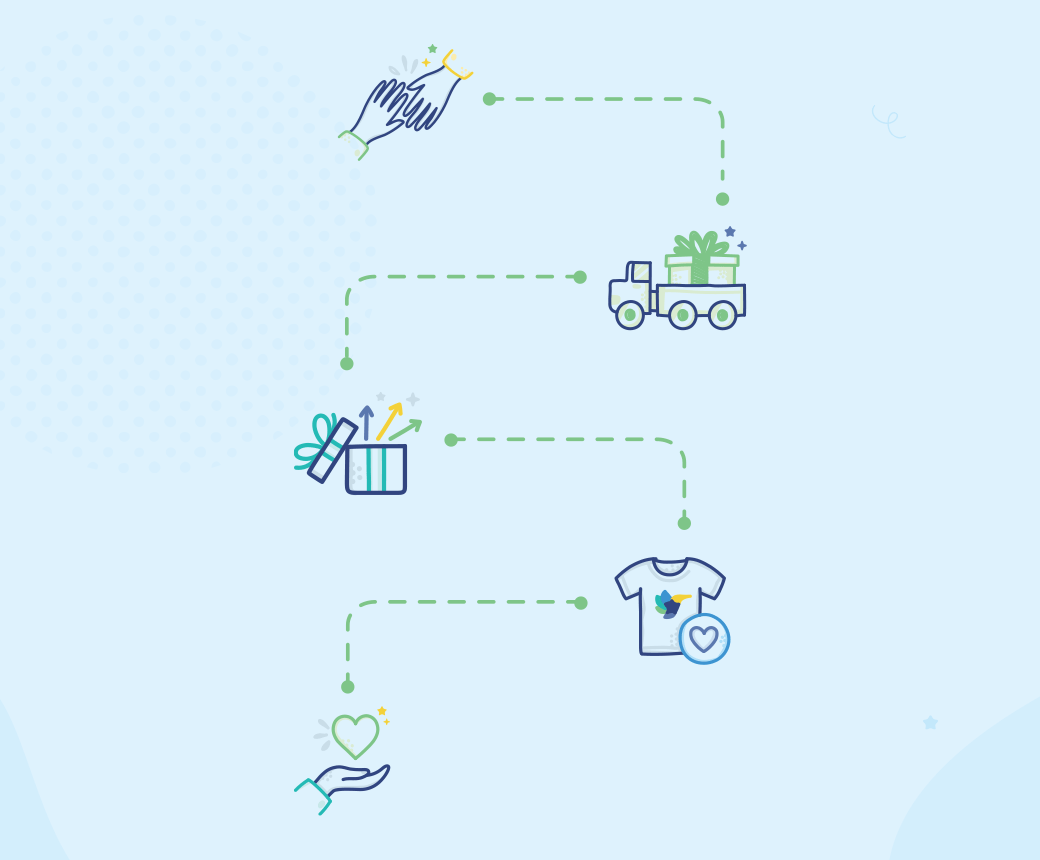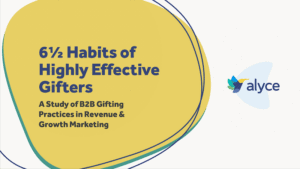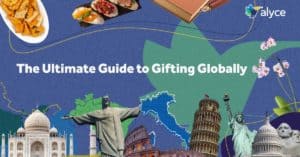
In September, we hosted our annual virtual event YOUniverse as an opportunity to share how to create experiences that cause conversations. And we learned that the best marketing isn’t marketing at all.
Jay Baer, President of Convince & Convert, joined us for a fireside chat to discuss why customers talk about their favorite companies. As the author of six best selling books on customer experience, Jay shared how to create customer experiences that cause conversations.
Using talk triggers for storytelling
If you’re trying to generate attention and create word of mouth, “you must give [customers] a story to tell and you must make it unconventional.”
Jay calls these stories “Talk Triggers”. Talk triggers are defined as “a strategic, operational choice that compels word of mouth”.
Talk triggers can’t be too grand to create suspicion, but need to be consistent within the business. Surprise and delight is not a sustainable nor repeatable strategy that will affect every customer.
People are wired to discuss experiences that are different – and ignore those that are average. Stories serve as social proof – one of the most popular vetting tools today. In fact, 70% of consumers say that reviews matter more to them now than ever before.
But word of mouth doesn’t just happen. As Jay shared, “we just assume that if we go about our business and don’t screw anything up, people will naturally notice and talk about us.” That’s just not how people behave.
DoubleTree’s chocolate chip cookies
In Jay’s book, Talk Triggers, co-authored with Daniel Lemon, he discusses how DoubleTree hotels have a talk trigger that people notice – and go out of their way to tell others about.
When guests check-in at any DoubleTree hotel, they’re handed a warm chocolate chip cookie to start off their stay. This has been the hotel’s operational choice for thirty years. Before the pandemic, when their hotels were fully occupied, DoubleTree was handing out around 75,000 chocolate chip cookies a day, worldwide.
Jay surveyed guests and found that 34% of them told someone the story about their chocolate chip cookie. With 75,000 cookies a day, times 34% of people, that equals about 26,000 stories a day.
The result is that DoubleTree advertises far less than any other hotel in their category, “The cookie is the ad and the guests are the volunteer sales and marketing department,” said Jay.
Becoming a Youtility
Most marketing is simply not embraced. It’s not desired. It’s the penalty customers must endure to be able to get the products and services they care about. The key to breaking through customer cynicism is by becoming truly, massively helpful.
That’s what it takes to become a Youtility. The concept of being a Youtility flips customer messaging on its head, by creating useful and desirable marketing.
Helping over selling is the key to becoming a Youtility. Which can sound counterintuitive – giving something away for free doesn’t sound like the best way to build a marketing strategy.
Another way to think about this kind of strategy is by thinking about becoming a Youtility as an awareness strategy. Jay calls it “friend of mine awareness.”
With friend of mine awareness, you seek to have the prospective customer allow you inside their circle of trust, where you become more than just a purveyor, but rather a valuable resource.
Then, when the customer is ready to buy, they don’t have to go find you, because you’re already there.
Efficiency – the enemy of Youtility
Most companies operate on the basis of efficiency. It’s about how to reduce effort and resources while covering more ground. This is where the idea of marketing automation comes from. These companies are focused on reducing cost per interaction when they should be focused on increasing the value of each interaction.
In B2B marketing, the bar of customer expectations is already low. Acquia found that two-thirds of customers can’t name a time when a brand exceeded their expectations. Interestingly, it becomes comparatively simple to create a lot of word of mouth just by having the courage to do one thing differently.
Gifting strategies aren’t always the most efficient operational choice, but if it has a disproportionately greater impact, it’s worth the investment. “Otherwise companies are just trying to paint by number,” said Jay. Squeezing out more automated emails. It’s about making investments in creating empathetic experiences.
The helpful realtor of Tallahassee
Jay shared a wonderful story about a realtor in Tallahassee, Florida named Joe Manessa. He approaches marketing completely differently than most realtors. Because he happens to sell in a market and price range where profit isn’t as high, lots of homeowners think that they can forgo a realtor and sell their house themselves.
Most realtors will try to talk them out of that but Joe did the exact opposite. He gave people exactly what they needed with a sixty three page downloadable guide on how to sell a home on your own – and made it available for free on his website.
What people soon realize, usually by page thirteen is,“what was I thinking? I can’t sell a house on my own!” So this free guide ended up being his number one source of customers. It also resulted in word of mouth referrals to friends and neighbors who are also considering selling their home.
Instead of trying to talk people out of selling their homes on their own, he focused on being helpful by providing information completely for free and establishing himself as a realtor who cares about his relationships.
He became a Youtility.
Making your marketing strategy a Youtility
Forrester released a report stating that marketing messages, in B2B especially, will be up 40% in 2021. But two thirds of B2B buyers say that they’re receiving too many messages as it is.
The problem lies in the Youtility of the messaging. “The lie we tell ourselves is that our audience is just too busy,” said Jay, “ that they don’t have time to go to the webinar, or listen to the podcast, or read the ebook, or the email.”
The truth is that if somebody says they don’t have time, what they really mean is that your marketing isn’t relevant or desirable enough. It’s not worth their time. But if you give a customer or prospect exactly what they need, whether it’s an amazing gift or an ebook, in the format they prefer, and just when they need it, they’ll have the time necessary to engage with the content.
Giving the same gift to everybody on the same day is better than no gift. But it won’t change how they feel about your company as a Youtility. It won’t have the desired breakthrough effect.
Reactive versus proactive word of mouth
Almost all successful businesses have a high level of reactive word of mouth – when the conversation naturally ends up on a topic where somebody asks about customer satisfaction. When people are out to dinner with their friends and somebody says, “Hey, who do you use for your insurance?” and receive a recommendation. Reactive word of mouth is really based on competency and operational success.
Proactive word of mouth is when the topic of conversation at dinner is not insurance, but someone says “My insurance provider has the coolest thing that she does.” They’re going out of their way to tell the story which can create new customers.
Creating compelling stories and becoming a Youtility is how companies like DoubleTree reduce their marketing spend. As Robert Stephens, the founder of Geek Squad at Best Buy, said, “advertising is the tax you pay for being unremarkable.”
The most successful and effective organizations in the world, like DoubleTree, advertise the least because their customers voluntarily do the marketing for them by word of mouth.
Using talk triggers when recruiting talent
The people who currently work at an organization are the best emissaries to recruit the next group of people. But competency doesn’t create conversation. No one goes out of your way to tell their friends that their workplace and company culture is fine.
Jay said that when it comes to recruiting via word of mouth, companies have to do something different that creates those conversations and “that builds storytelling momentum amongst your existing teammates.” Previously companies said, look how many foosball tables we have, and other semi-quirky differentiators to create conversations. That doesn’t work for a remote work environment.
Creating conversations through a gifting strategy encourages your existing employees to tell their stories to potential recruits in an environment that is no longer face to face.
How to learn more
Check out the rest of the YOUniverse sessions and watch the recorded content to learn how companies use Alyce to cause conversations. Visit our resources page to learn more about creating impactful personal experiences.





